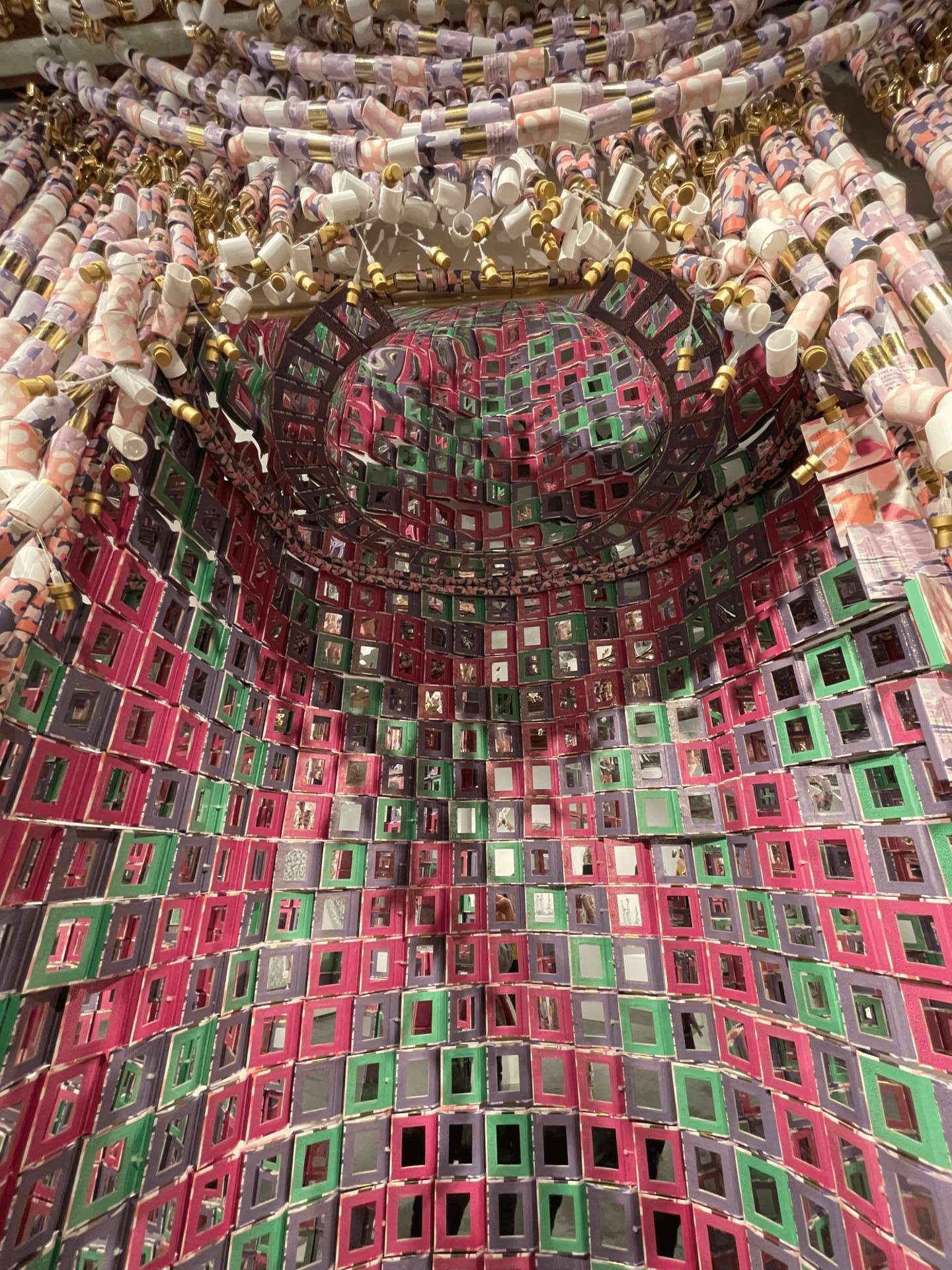We recently connected with Kate Dodd and have shared our conversation below.
Kate, looking forward to hearing all of your stories today. We’d love to hear about a project that you’ve worked on that’s meant a lot to you.
Sometimes the most meaningful projects are the ones that you learn the most from. One of the reasons I like making site-specific work is because I get so fully immersed in the site and its community, and consequently learn about both. I had one of these experiences creating an artwork for the annual Snug Harbor Cultural Center outdoor summer show in Staten Island. The work consisted of a 1/4 mile trail, a treasure hunt of sorts, where visitors were encouraged to follow the fluorescent orange color typical of construction sites as it meandered over the grounds, from the museum facade to deep in the woods. I highlighted park benches, cracks in the pavement, rusted railings, and more, to create a visual path to follow, which ultimately led to a tree house at the far end of the property. While it garnered my first review in the New York Times, it also drew attention from other stakeholders, most notably the president of the adjacent botanical gardens. I was accused of graffitiing trees and committing arboricide, because I had applied removable paper pulp (a tree product!) to the grooves in the bark of several trees (which were an invasive species growing outside of the garden boundary); the president demanded my work be censored immediately. Meanwhile, a local gang took over the tree house and tagged it with their moniker, which inspired a competing group of teens to set fire to it, albeit somewhat ineffectively. My understanding of what public space is, and the role projects like this play in identifying stakeholders, fundamentally changed. I did not expect everyone to love my work, but I hadn’t fully realized that it could be absorbed as a political or social tool without any connection to it as an artwork. I learned that to be a public artist, by its very nature, is to create a conversation about territorial rights and responsibilities.

As always, we appreciate you sharing your insights and we’ve got a few more questions for you, but before we get to all of that can you take a minute to introduce yourself and give our readers some of your background and context?
I am a visual artist, originally trained as a sculptor, but I have gone on to work in many mediums, particularly as a site-specific installation artist. I got interested in working this way during the 1980’s, when the focus on art as a commodity and financial investment emerged as a central theme in the art world. I realized I could work in the opposite direction, by creating work for a particular site; often these works had to be temporary in order to take advantage of non conventional art-viewing venues. I had always been interested in finding human scale spaces within vast environments, and so this instinct, combined with my background in architecture, led me to creating work in a variety of places: under a fire escape, in a warehouse basement, a farmer’s field, a beauty salon window, a cafeteria ceiling, etc. This focus on impermanent works, and my deep love of manipulating nontraditional art media, has led me to working primarily with discarded materials, and therefore to addressing issues of consumption and waste in much of my recent work. I’m interested in using multiple small objects to create large structures that bring attention to the beauty and potential of repurposed materials while fostering a greater understanding of our environmental impact.
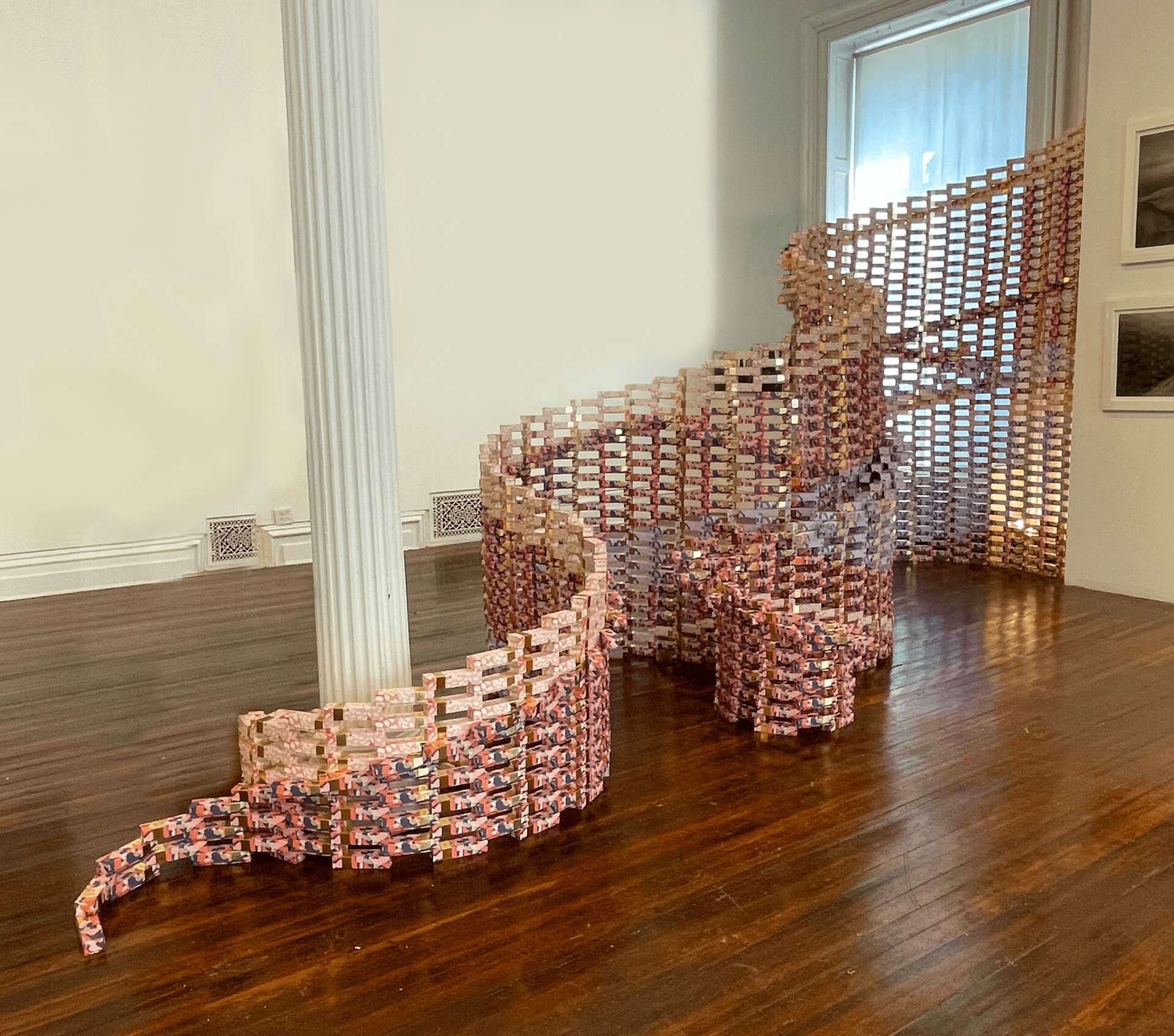

What’s the most rewarding aspect of being a creative in your experience?
To me, being an artist gives my life structure and meaning. I wouldn’t really know what I’m here for if I didn’t have it as an identity and activity. It took me a while to appreciate that my need to make things is undeniable, and to realize that I see potential where others do not. When I engage in this part of myself, I experience a gamut of emotions, from joy, to comfort, to patience and endurance. The act of creating allows me to come to terms with all the aspects of the world that I find overwhelming: the human capacity for waste and destruction, the fact of mortality, the beauty that surrounds us. Experiencing the impact my artwork has on others, and being able to engage with numerous people I might never have interacted with otherwise, makes me feel deeply connected to the rest of the world.
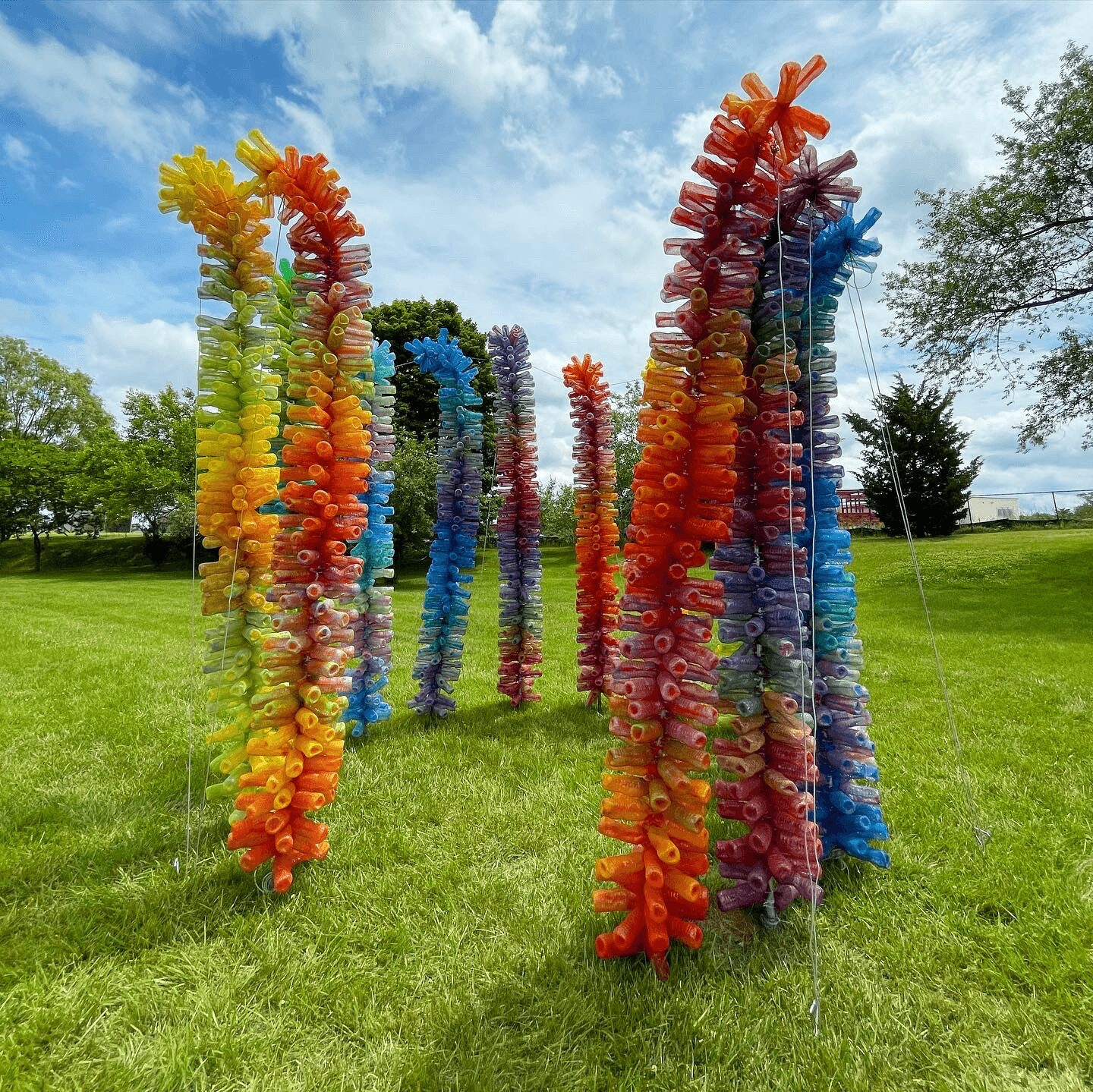
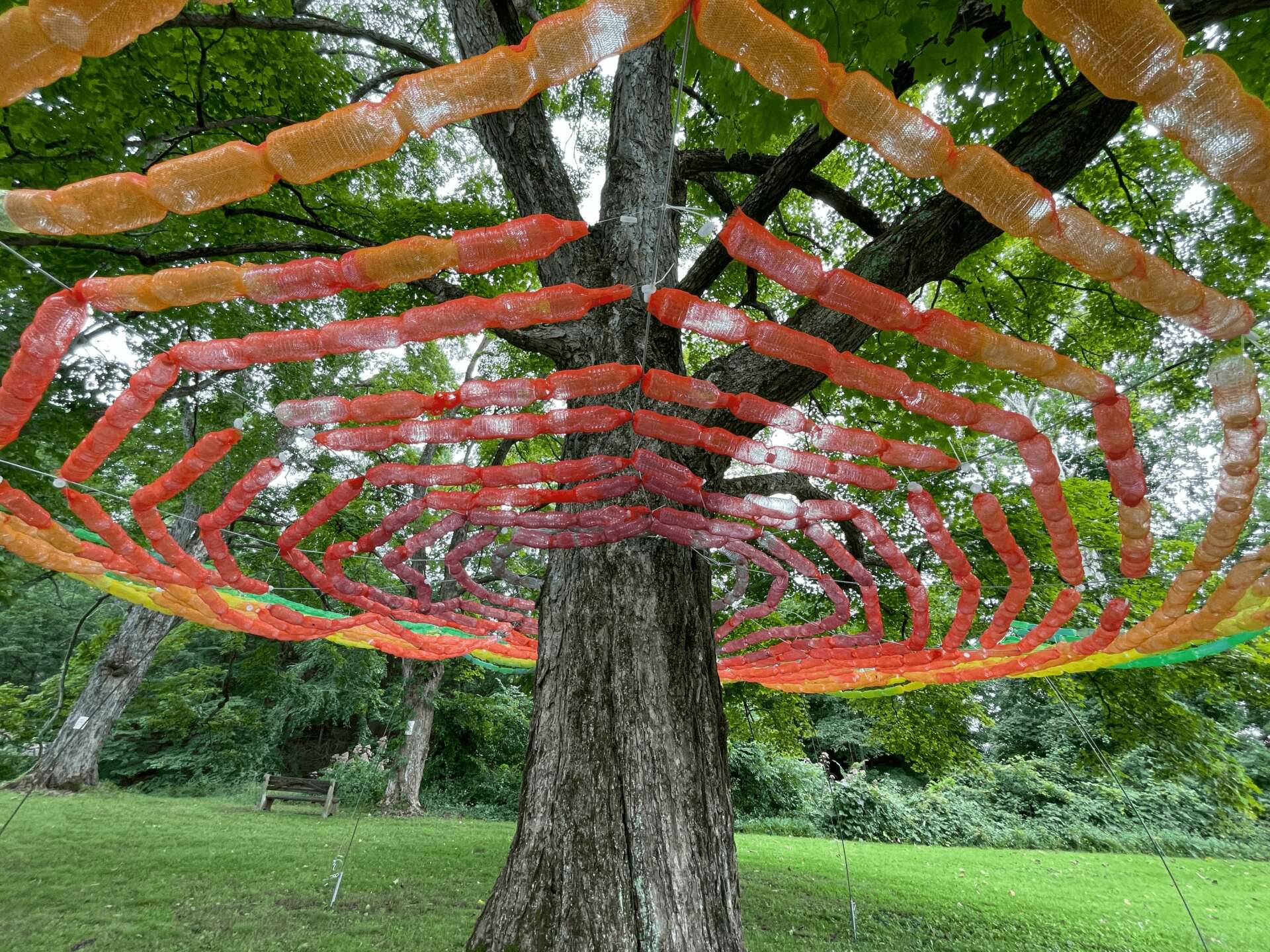
Is there mission driving your creative journey?
I wouldn’t call it a goal or mission – it’s more of an instinct. Whenever I see great quantities of a material – it could be anything – I am compelled to react. I immediately feel the need to collect it, build with it, transform it. I think part of this is an intense hunter/gatherer impulse, and a guard against scarcity. But it’s also a reaction, of revulsion, to the unbelievable levels of waste produced in contemporary society and to my understanding of how that connects to an impoverished future. Making temporary installations or using repurposed materials often means my work is not archival, which can mean it’s ultimately disposable. The materials I use are delayed in entering the waste stream, but they will enter it nevertheless. I am engaging in the same impulse I’m criticizing: creating for enjoyment now and relying on the convenience of disposal, rather than doing the hard work of preservation or reducing my consumption. Building with waste materials may shed light on the problem, but it doesn’t provide a viable alternate direction, much as I wish it would.
Contact Info:
- Website: https://katedodd.com
- Instagram: @katedoddstudio
- Youtube: https://youtu.be/ro7Bi9LJl2Y?si=m7hzoJnrRgKhF97Z
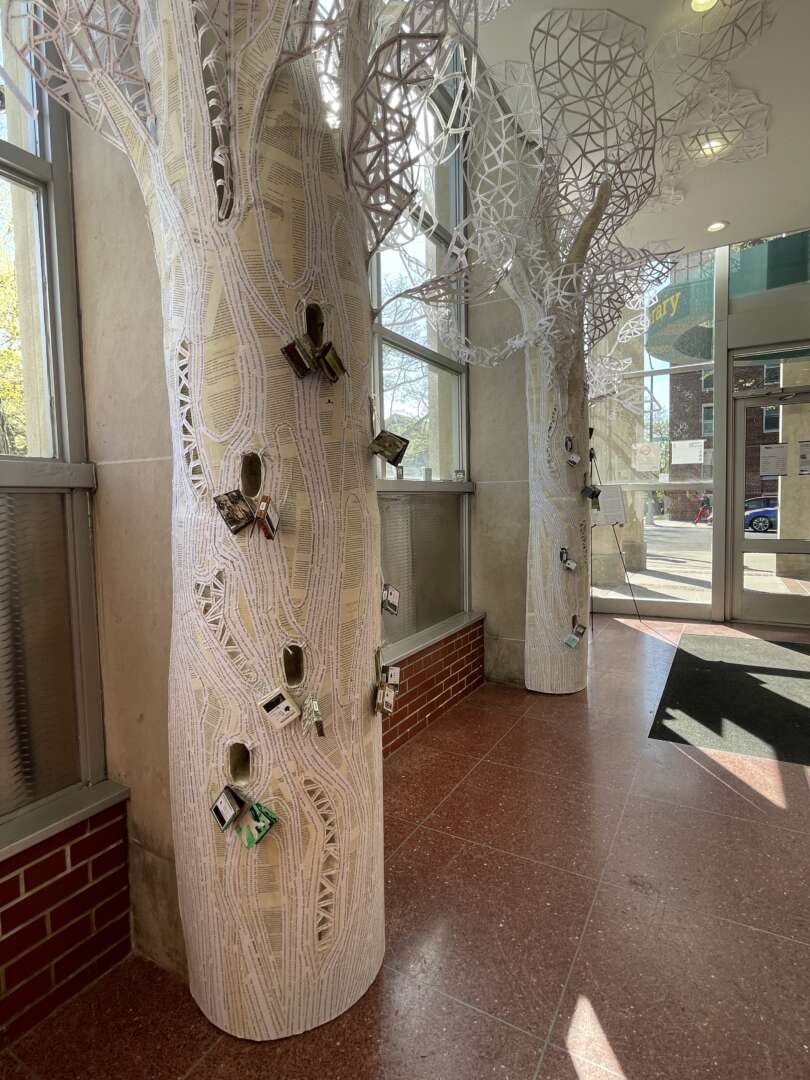
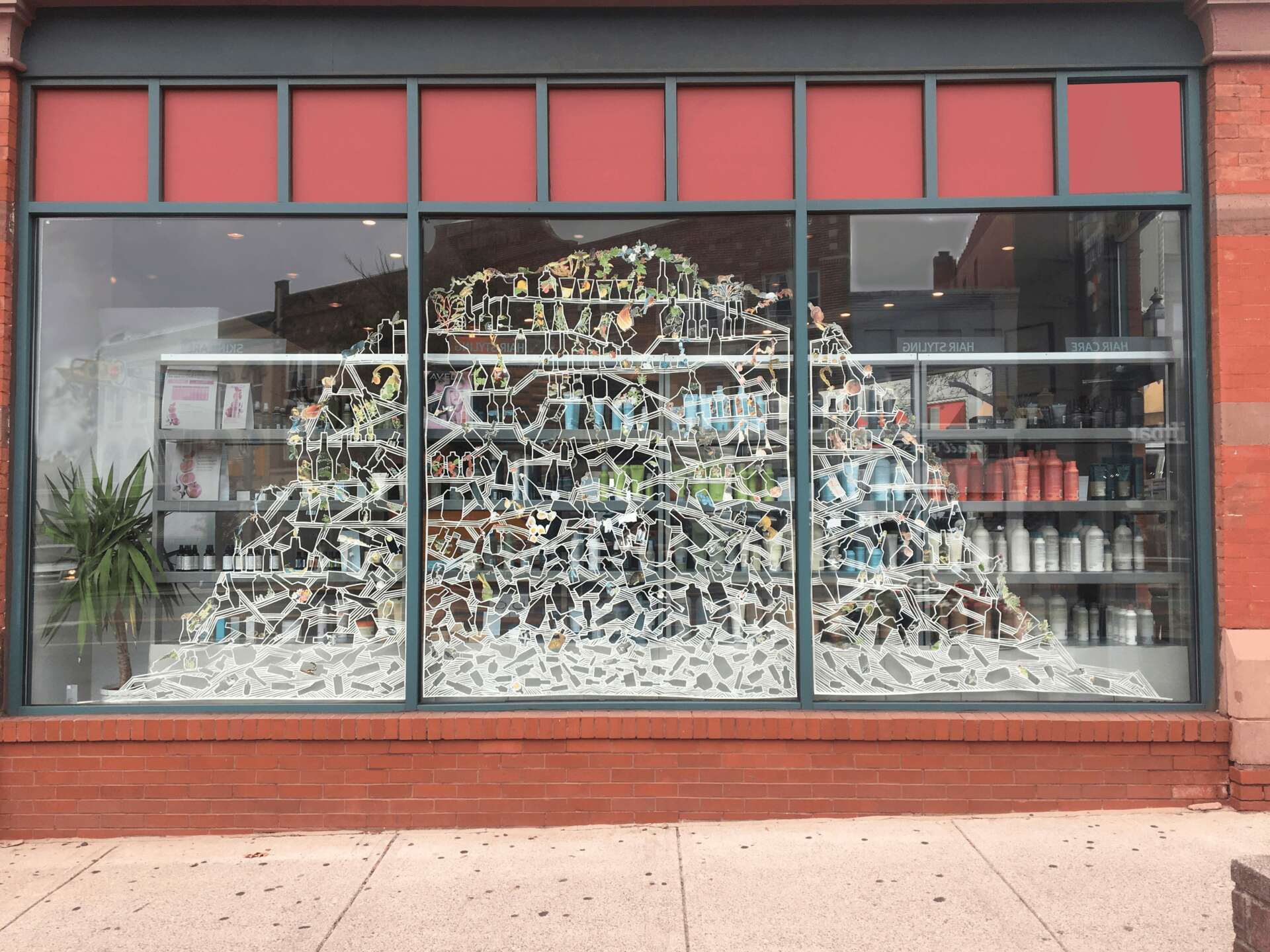
Image Credits
Kate Dodd


